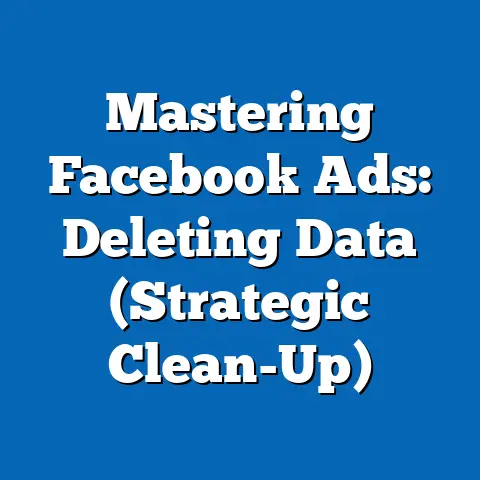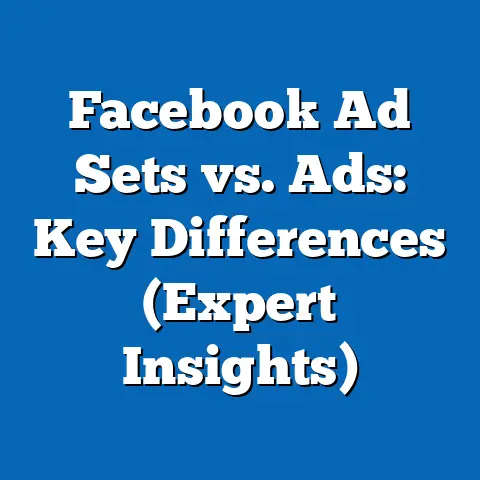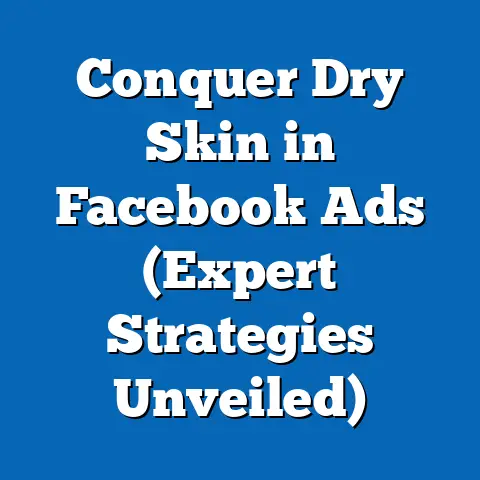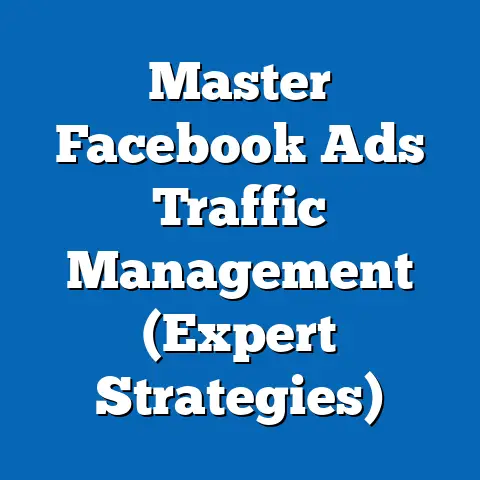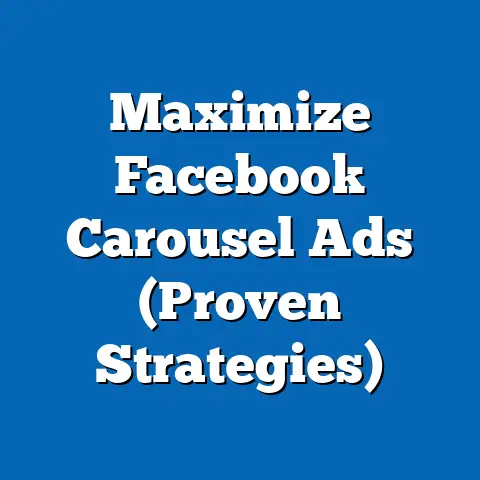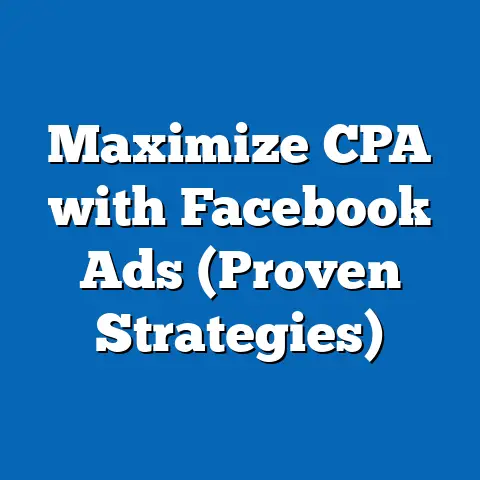Create Facebook Ad Account in 2025 (Essential Guide)
In the ever-evolving landscape of digital marketing, one thing remains constant: the need to adapt. But in 2025, adaptation isn’t just about keeping up with the latest algorithm changes; it’s about embracing a fundamental shift towards sustainability. Today’s consumers, and increasingly tomorrow’s, are demanding more from brands than just products and services. They want to see genuine commitment to environmental and social responsibility. This shift makes sustainable marketing not just a trendy buzzword, but a crucial business imperative. As I see it, companies that prioritize eco-friendly practices are not only building a better world but also positioning themselves for long-term success.
And where does Facebook advertising fit into all of this? Well, with billions of active users, Facebook remains a powerhouse for reaching a diverse and engaged audience. By leveraging Facebook ads, businesses can effectively promote their sustainable initiatives, connect with eco-conscious consumers, and drive meaningful change. In this guide, I will walk you through the steps of creating a Facebook ad account in 2025, with a strong focus on integrating sustainability into every aspect of your digital marketing strategy.
Understanding Facebook’s Advertising Ecosystem
Before diving into the nitty-gritty of setting up your ad account, let’s take a moment to understand the lay of the land. Facebook’s advertising platform is a complex but powerful ecosystem, offering a wide range of ad types and placements to suit different business goals. You can choose from image ads, video ads, carousel ads, and more, each designed to capture attention and drive engagement. These ads can then be placed across Facebook, Instagram, the Audience Network (a network of third-party websites and apps), and even Messenger.
The real magic, however, lies in Facebook’s algorithms. These sophisticated algorithms analyze user data to deliver your ads to the most relevant audience, maximizing your chances of success. They consider factors like demographics, interests, behaviors, and even past purchase history to ensure that your message reaches the right people.
What’s exciting in 2025 is the increasing integration of sustainability metrics into the ad performance analytics dashboard. Facebook now offers insights into the environmental impact of your campaigns, allowing you to track metrics like carbon emissions and waste reduction. This data empowers you to make more informed decisions and optimize your campaigns for both business and environmental benefits. I remember when this was just a distant dream, but now it’s becoming a reality!
Key Takeaway: Facebook’s advertising ecosystem offers a vast array of options for reaching your target audience. In 2025, it’s more important than ever to understand how the algorithms work and how to leverage sustainability metrics to optimize your campaigns.
Setting Up Your Facebook Ad Account
Now, let’s get down to business and set up your Facebook ad account. Here’s a step-by-step guide to get you started:
Step 1: Creating a Facebook Business Manager Account
First things first, you’ll need a Facebook Business Manager account. This is a central hub for managing all your business assets, including your Facebook pages, ad accounts, and team members.
- Go to business.facebook.com and click on “Create Account.”
- Enter your business name, your name, and your business email address.
- Follow the prompts to provide additional information about your business, such as your address and website.
It’s crucial to separate your personal and business accounts for a number of reasons. It keeps your personal information private, allows for better team management, and ensures that your business assets are protected.
Step 2: Adding Your Business Information
Once you’ve created your Business Manager account, you’ll need to add your business information. This includes details like your business name, address, phone number, and website.
- In Business Manager, go to “Business Settings.”
- Click on “Business Info” in the left-hand menu.
- Fill in all the required fields with accurate and up-to-date information.
Transparency and authenticity are key components of sustainable branding. Consumers are more likely to trust brands that are open and honest about their operations, so make sure your business information is clear and accurate. I’ve learned that the hard way – being upfront about your business practices can significantly boost consumer confidence and loyalty.
Step 3: Setting Up Your Ad Account
Now it’s time to set up your ad account. This is where you’ll manage your ad campaigns, set your budget, and track your performance.
- In Business Manager, go to “Business Settings.”
- Click on “Ad Accounts” in the left-hand menu.
- Click on “Add” and choose “Create a New Ad Account.”
- Enter your ad account name, choose the right currency and time zone, and click “Create.”
Choosing the right currency and time zone is important for accurate reporting and billing. Make sure you select the options that are most relevant to your business.
Step 4: Linking Facebook Page and Instagram Account
Finally, you’ll want to link your Facebook page and Instagram account to your Business Manager account. This will allow you to run ads on both platforms and manage them from a single location.
- In Business Manager, go to “Business Settings.”
- Click on “Pages” in the left-hand menu.
- Click on “Add” and choose “Add a Page” or “Create a New Page.”
- Repeat the process for your Instagram account by clicking on “Instagram Accounts” in the left-hand menu.
Linking these accounts is crucial for cohesive branding and maximizing outreach. Your customers expect a consistent experience across all your social media channels, so make sure your branding is aligned and your messaging is consistent.
Key Takeaway: Setting up your Facebook ad account is a straightforward process, but it’s important to pay attention to detail and ensure that all your information is accurate and up-to-date.
Navigating Facebook Ads Manager
Once your ad account is set up, you’ll need to familiarize yourself with Facebook Ads Manager. This is the central hub for creating, managing, and analyzing your ad campaigns.
The Ads Manager interface is divided into three main sections:
- Campaigns: This is where you set your overall campaign objective, such as brand awareness, lead generation, or website traffic.
- Ad Sets: This is where you define your target audience, set your budget, and choose your ad placements.
- Ads: This is where you create your individual ads, including your ad copy, visuals, and call-to-action.
Creating a campaign is as simple as clicking on the “Create” button and choosing your desired objective. Facebook offers a range of campaign objectives to suit different business goals, from driving website traffic to generating leads to increasing brand awareness.
In 2025, Facebook has made significant updates to the Ads Manager interface, making it more user-friendly and intuitive. The layout is cleaner, the navigation is simpler, and there are more helpful tips and tutorials to guide you through the process. I’ve noticed that these updates have made it easier for beginners to get started with Facebook advertising, while still providing advanced features for experienced marketers.
When selecting your campaign objective, it’s important to align it with your sustainable goals. For example, if you’re a sustainable fashion brand, you might choose the “Brand Awareness” objective to reach a wider audience and promote your eco-friendly initiatives. Or, if you’re a renewable energy company, you might choose the “Lead Generation” objective to collect contact information from potential customers.
Key Takeaway: Facebook Ads Manager is a powerful tool for managing your ad campaigns. Take the time to familiarize yourself with the interface and understand how to create campaigns, ad sets, and individual ads.
Targeting Your Audience Effectively
One of the biggest advantages of Facebook advertising is its ability to target specific audiences with laser precision. You can target users based on demographics (age, gender, location), interests (hobbies, passions, favorite brands), and behaviors (purchase history, online activity).
In 2025, Facebook has introduced the concept of sustainable audience targeting. This allows businesses to connect with users who are specifically interested in eco-friendly products and practices. You can target users who have liked pages related to sustainability, joined groups focused on environmental issues, or expressed interest in eco-friendly brands.
Facebook’s advanced targeting features, powered by machine learning, can also help you identify potential customers who value sustainability. The algorithms analyze user data to identify patterns and predict which users are most likely to be interested in your sustainable products or services. I’ve seen this work firsthand; by using these advanced targeting features, I was able to significantly increase the ROI of my sustainable advertising campaigns.
Here are some examples of how you can use sustainable audience targeting:
- Target users who have liked pages related to environmental organizations or sustainable living.
- Target users who have expressed interest in eco-friendly products, such as organic food, recycled clothing, or renewable energy.
- Target users who have purchased products from sustainable brands in the past.
- Create a custom audience based on your existing customer list and target users who are similar to your most sustainable customers.
Key Takeaway: Targeting your audience effectively is crucial for maximizing the impact of your Facebook ads. In 2025, leverage sustainable audience targeting to connect with users who are passionate about eco-friendly products and practices.
Crafting Compelling Ad Content
Once you’ve identified your target audience, it’s time to create compelling ad content that resonates with them. This includes your ad copy, visuals, and call-to-action.
When writing ad copy for a sustainability-focused audience, it’s important to be authentic and transparent. Highlight your brand’s commitment to sustainability and explain the specific steps you’re taking to reduce your environmental impact. Avoid using greenwashing tactics, which can damage your brand’s reputation and alienate your audience.
Visuals are also crucial for capturing attention and conveying your brand’s message. Use high-quality images and videos that showcase your sustainable products or practices. Consider using visuals that evoke emotions and tell a story about your brand’s commitment to sustainability.
Here are some examples of effective sustainable messaging in Facebook ads:
- “Shop our collection of organic cotton clothing, made with sustainable practices and ethical labor standards.”
- “Reduce your carbon footprint with our renewable energy solutions. Learn more about our solar panels and wind turbines.”
- “Join us in our mission to protect the planet. We donate a portion of our profits to environmental organizations.”
- “Our packaging is made from recycled materials and is fully compostable. Help us reduce waste and protect our planet.”
Storytelling is a powerful tool for connecting with your audience on an emotional level. Share stories about your brand’s journey towards sustainability, highlight the positive impact you’re making on the environment, and showcase the people who are driving your sustainable initiatives.
Key Takeaway: Crafting compelling ad content is essential for capturing attention and resonating with a sustainability-focused audience. Be authentic, transparent, and use visuals and storytelling to convey your brand’s commitment to sustainability.
Budgeting and Bidding Strategies
Finally, let’s talk about budgeting and bidding strategies. Setting a budget for your ad campaigns is crucial for controlling your costs and maximizing your ROI. Facebook offers two main budgeting options:
- Daily Budget: This is the average amount you’re willing to spend each day on your ad campaigns.
- Lifetime Budget: This is the total amount you’re willing to spend over the entire duration of your ad campaigns.
Choosing between a daily budget and a lifetime budget depends on your specific goals and preferences. A daily budget is a good option if you want to run your ads continuously and have a consistent flow of traffic. A lifetime budget is a good option if you want to run your ads for a specific period of time and have a fixed budget.
Facebook also offers a range of bidding strategies to suit different business goals. The most common bidding strategies are:
- Cost-Per-Click (CPC): You pay each time someone clicks on your ad.
- Cost-Per-Thousand Impressions (CPM): You pay each time your ad is shown to 1,000 people.
The best bidding strategy for you will depend on your specific goals and budget. CPC is a good option if you want to drive traffic to your website and only pay when someone is interested in your ad. CPM is a good option if you want to increase brand awareness and reach a large audience.
In 2025, the concept of sustainable budgeting has emerged as a key consideration for businesses. This involves allocating funds to campaigns that not only drive sales but also promote ethical practices and environmental responsibility. Consider investing in campaigns that support sustainable initiatives, partner with eco-friendly organizations, or promote your brand’s commitment to social responsibility.
Key Takeaway: Setting a budget and choosing the right bidding strategy are crucial for maximizing the impact of your Facebook ads. In 2025, consider sustainable budgeting to align your advertising spend with your brand’s values and contribute to a more sustainable future.
Conclusion
Creating a Facebook ad account in 2025 is more than just setting up a platform for promotion; it’s about aligning your business goals with a global movement towards sustainability. By understanding Facebook’s advertising ecosystem, setting up your account correctly, navigating Ads Manager effectively, targeting your audience with precision, crafting compelling content, and implementing sustainable budgeting strategies, you can create impactful campaigns that drive both business and environmental benefits.
In 2025, the digital marketing landscape is ripe with opportunities for brands that prioritize sustainability. By embracing these opportunities and remaining committed to eco-friendly practices, you can connect with a growing audience that values environmental responsibility and build a more sustainable future for all. So, take the plunge, create your Facebook Ad account, and start promoting your sustainable initiatives to the world! I am confident that by doing so, you’ll not only see a positive impact on your bottom line but also contribute to a better planet for generations to come.

